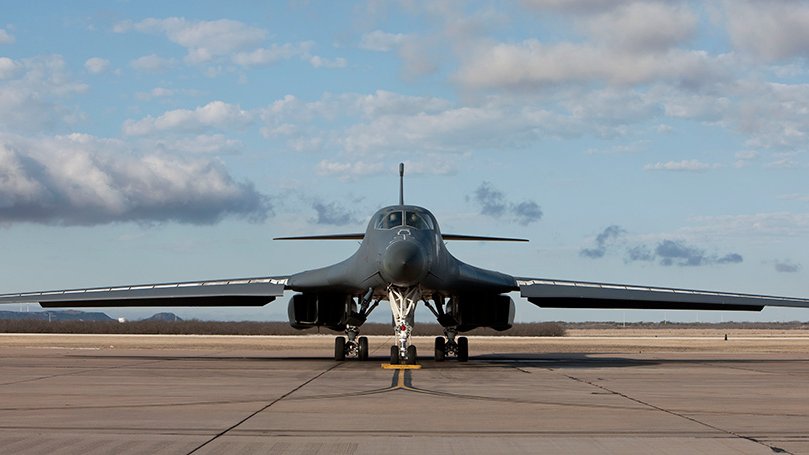The National Institute for Aviation Research at Wichita State University has snared the largest contract award in the school’s history.
NIAR has been awarded $100 million by the Air Force for continued work on the B-1 bomber.
The institute has been working on digital engineering (DE) of the aircraft, or digital twining.
The digital copies of the aircraft allow for a next-generation approach to repair and maintenance that helps the Air Force better predict the aircraft’s life cycle needs.
With the massive follow-on contract, NIAR will help ensure the legacy B-1 adapts to the same digital world that new aircraft are born in.
“This project brings the B-1 into the same field as newly designed aircraft and allows digital modeling to predict future areas of concern,” saID Lt. Col. Joseph Lay, material leader for structures for the B-1 System Program Office. “DE will not only help reduce the time it takes to develop repairs, but also to install them. We will be able to develop and test repairs well in advance virtually ensuring first time success and improving aircraft availability.”
NIAR received its first B-1 for research and testing at its facility at the former Kansas Coliseum in May 2020.
The institute and service say the need extend the bomber’s life has accelerated by the aircraft usage in operations including Desert Fox, Allied Force, Iraqi Freedom and Enduring Freedom that pushed it past anticipated flight hours sooner than expected.
“NIAR is eagerly looking forward to continuing to support the (program’s) transformation by reducing cost, expanding the supply base, and increasing aircraft mission readiness,” said Melinda Laubach-Hock, B-1 program director for NIAR. “Over the past two years, the B-1 program team has developed smart ways to implement DE for maximum impact on legacy platforms.”
The contract is a significant milestone in WSU and NIAR’s efforts in recent years to make Wichita a hub for defense research.
“This is the largest award Wichita State has ever received, and it’s in large part due to the university’s groundbreaking work and recognition of digital transformation as an emerging field of research with enormous growth potential,” WSU president Rick Muma said. “Our work in the defense industry has been a tremendous applied-learning opportunity for our students, and it has strongly contributed to the economic prosperity of our state.”
University leaders have widely credited Sen. Jerry Moran, (R-Kan.), through his appointments on defense and appropriation committees, for helping draw the U.S. military’s attention to Wichita.
“Wichita State University continues to support our nation’s security priorities by offering innovative and effective solutions to the Air Force’s most pressing challenges,” Moran says. “The partnership that has grown between NIAR and the B-1 System Program Office is improving B-1 readiness will keep these legacy bombers in the fight for years to come.”
While the contract flows into NIAR, it sets the stage for potential work for local manufacturers, as well.
John Tomblin, senior vice president for industry and defense at WSU, tells the WBJ that Wichita will be in a prime position to actually build the components digitized by NIAR as the service needs them.
“When DoD needs a part … we can make them for them,” he says.
And with similar work on the F-16 and what Tomblin says are more announcements to come, supporting legacy defense aircraft could become big business in the Air Capital.
“Being the tip of the spear for the DoD on digital engineering, it’s a great place to be,” he said.
The B-1 first entered service in 1985. The aircraft was once a fixture in the skies above Wichita as part of the Kansas Air Guard 184th Bomb Wing at McConnell Air Force Base. That wing switched to the 184th Refueling Wing in 2002.
